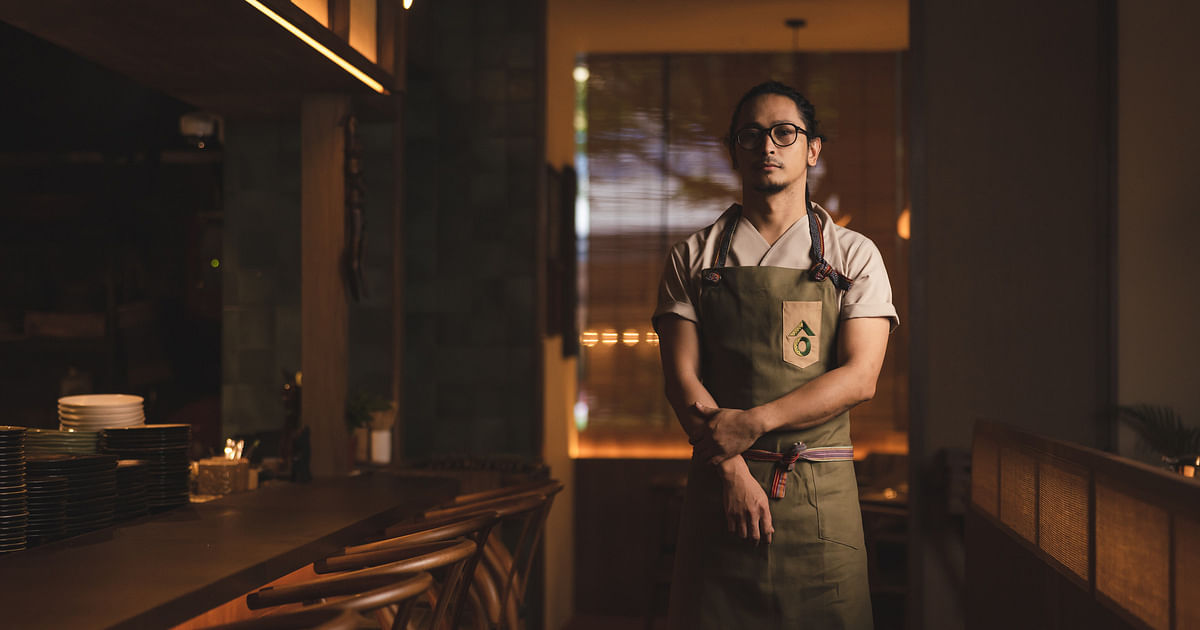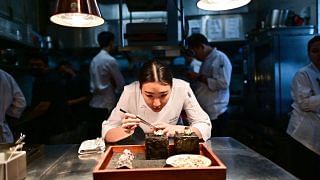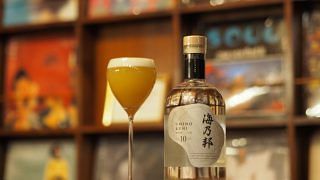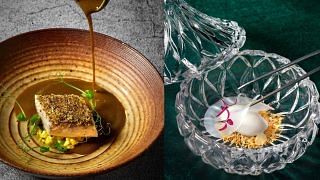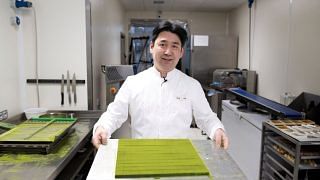When chef Kurt Sombero broached the idea of opening a Filipino-inspired restaurant, some jokingly asked if he planned to open it at Lucky Plaza, a haunt of many foreign domestic workers from The Philippines.
He says candidly: “There is no respect for Filipino cuisine here. Most people think it is something that is eaten only at home, and that the food, served with a lot of rice, is often overcooked; it is also either too dry or filled with sauces.”
Originally from the Philippines, Sombero, who has been based in Singapore for nine years, is hoping to change that perception with Kubo, his contemporary wood-fired restaurant, which opened in July. The 140-seat establishment in Robertson Quay, which he opened with the Tipsy Collective group, celebrates Filipino flavours in a refined and nuanced manner.
Inspired by his Filipino heritage
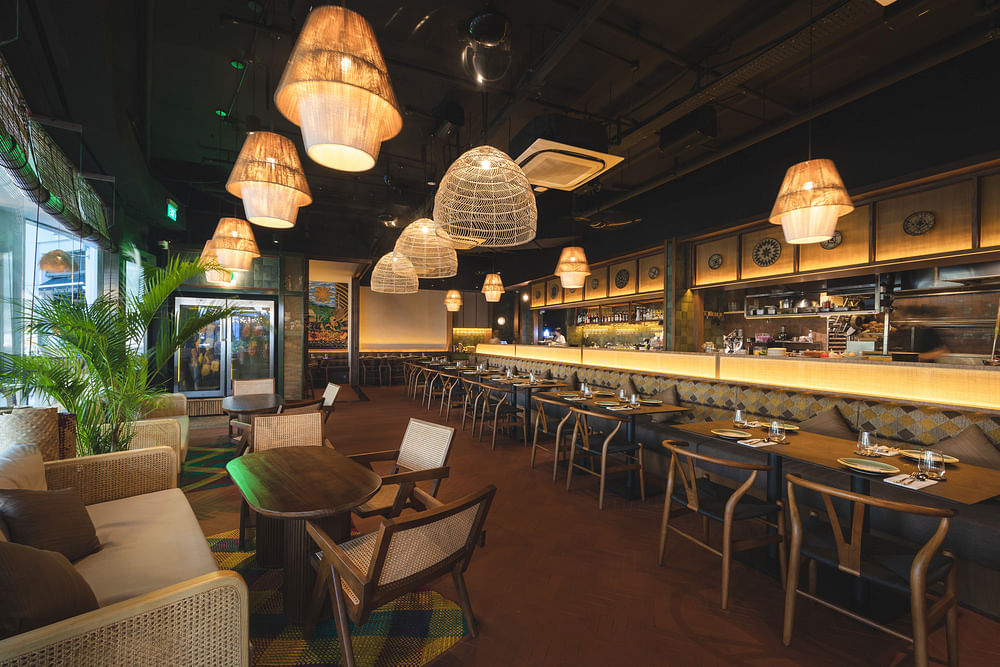
The dishes are served on small plates, many of which are smoked and grilled. Some are inspired by Filipino favourites, such as lechon, sisig and adobo. He elevates these dishes with ingredients such as foie gras, uni, and truffles to enhance their flavours.
“I am not trying to be authentic as that would confine my cuisine,” says the 35-year-old. “I want to build a bridge to unleash the possibilities of Filipino cuisine and create dishes people will be proud of and so enamoured with that they will want to learn more about them.”
Related: Preserving heritage recipes through home cooking
The soul of Kubo: the traditional wood-fired oven
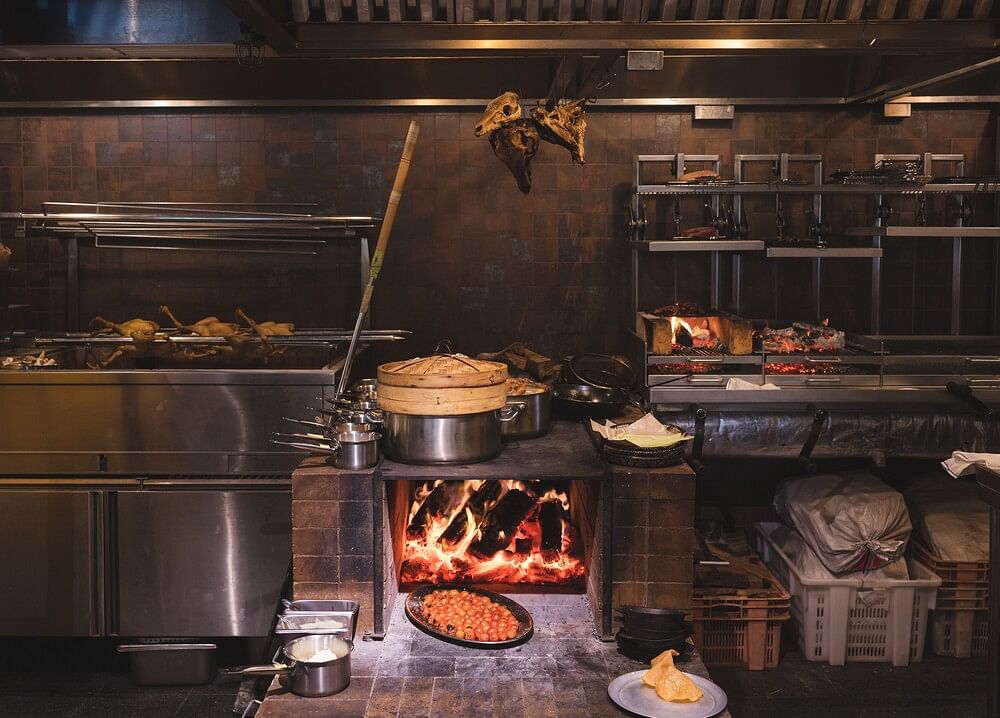
The pugon or traditional wood-fired oven is the “heart and soul” of Kubo, named after the thatched huts that dot rural Philippines. As the former head chef of American smokehouse Meatsmith Little India and sous chef of the one-Michelin-starred modern Australian barbecue restaurant Burnt Ends, Sombero is no stranger to cooking with fire.
A cast iron lid covers the brick oven, which is filled with ironbark wood. Capable of reaching 600 deg C, the oven is also used to boil pots of stock and sauces. Burnt coals are also placed on the elevation grill, while smoke from the oven is channelled to a smoker.
I want to build a bridge to unleash the possibilities of Filipino cuisine and create dishes people will be proud of and so enamoured with that they will want to learn more about them.
Kurt Sombero
Going back to the basics by cutting the gas supply
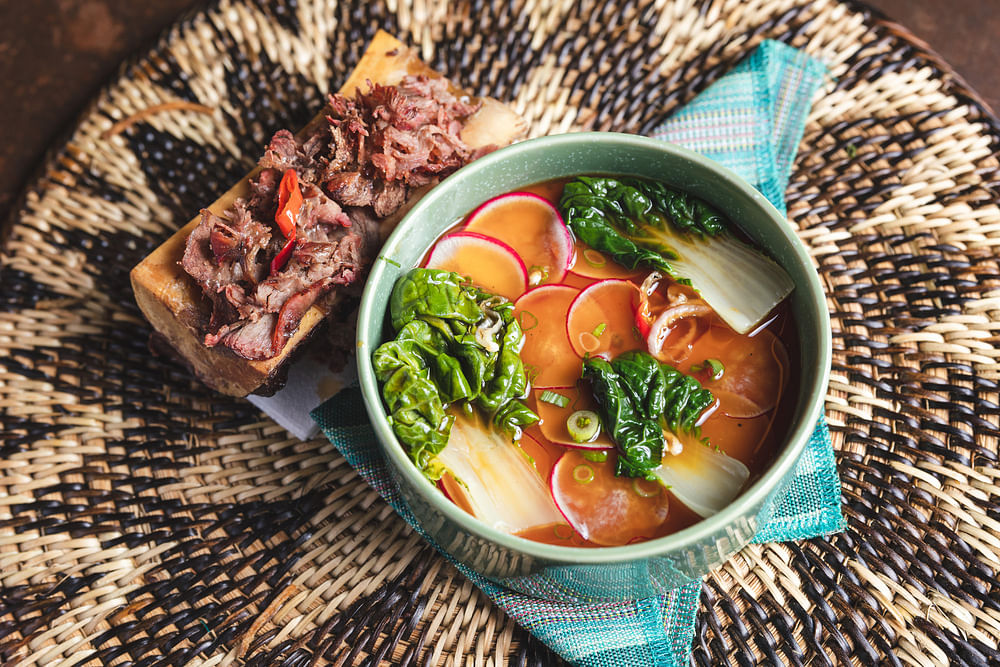
In addition to wood, coconut husks and bamboo are also commonly used in the pugon to this day. For Sombero, the roasty aroma of burnt coconut husk fires up halcyon childhood memories. He says wistfully: “It transports me back to my childhood, when I used to run around the fields and skip classes.” The oven was also a lifeline for Sombero’s family. His grandmother, who sparked his interest in food, sold Filipino cuisine including dishes such as adobo and sinigang cooked in the pugon to support the family when she was in her 50s.
Sombrero was so determined to go back to the basics of cooking that he cut off the gas supply when he took over the restaurant. He also pickled and brined some ingredients for up to 36 hours.
Related: Kevin Wong, chef-owner of Seroja stirs a melting pot of flavours across the Malay Archipelago
Filipino flavours in a new light
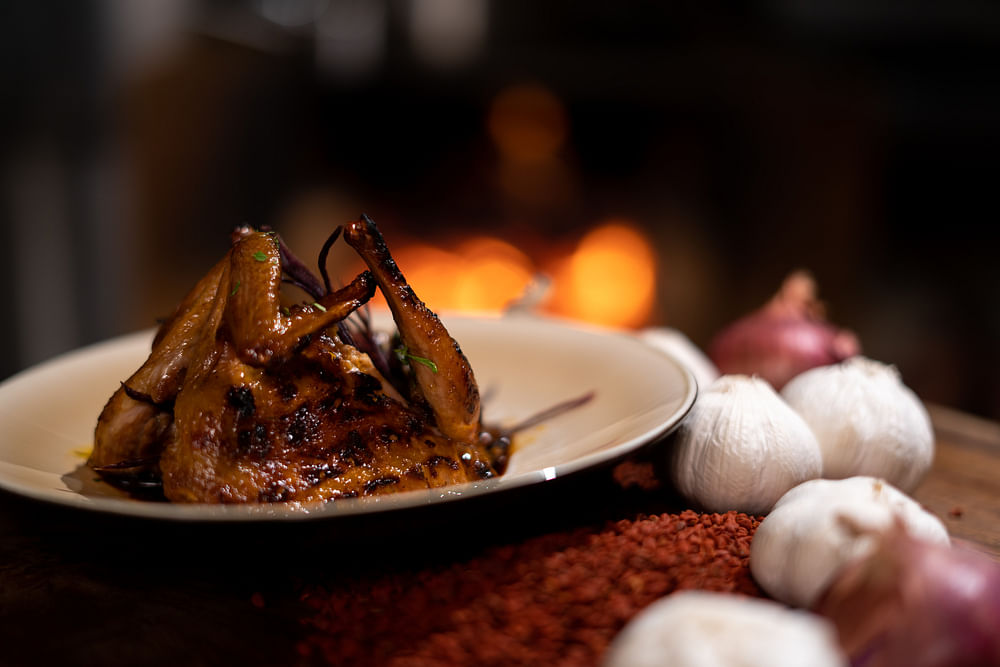
Menu highlights include adobo made with quails that had been brined, smoked, and grilled. The burnished birds sit on a garlic mashed potato made with smoked butter and milk, and onion fritters. The bulalo soup is deconstructed into a corn custard and shaved smoked beef nestled in unctuous bone marrow that are served with uni for extra creaminess. The classic Halo-Halo dessert comes with a show-stopping presentation: the coconut husk shell, which houses a house-made purple yam ice-cream crowned with Italian meringue, is torched a la minute.
Sombrero, who grew up in a village, says: “I want to go back to kampung life, where we build a more genuine connection with things around us. I believe that to move forward, we need to take a step back first.”
Find out more: Kubo Singapore
Related: Dining in Manila: is the capital of the Philippines the next great food city?




